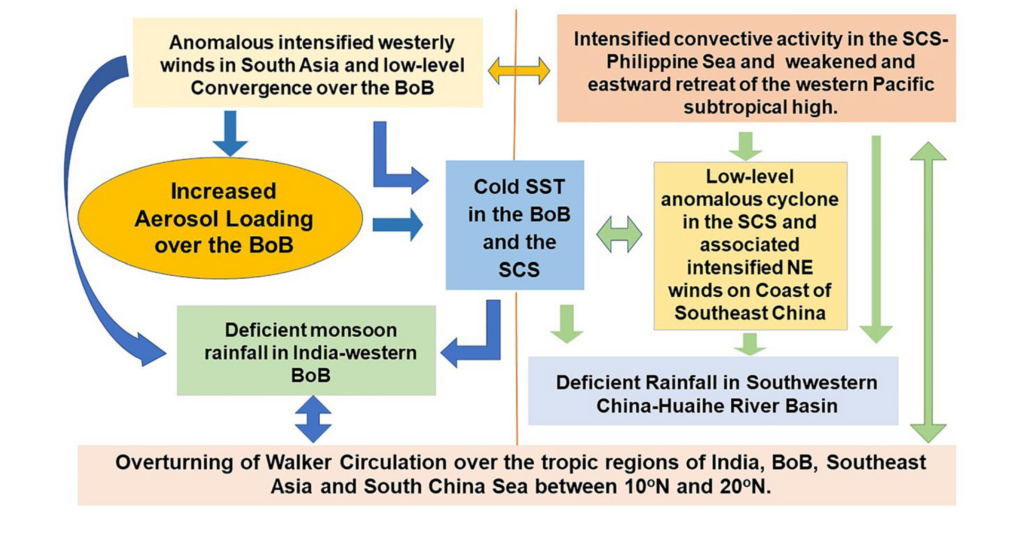
ESSIC/CISESS Scientist Yongsheng Zhang recently published a study on the year-by-year aerosol variations over the Bay of Bengal (BoB) and Arabian Sea (AS) in early spring and their relationship to the Asian summer monsoon rainfall anomalies using satellite-observed aerosol products.
The researchers found that increased aerosol loading over the Bay of Bengal was accompanied by deficient rainfall in India and excessive rainfall in the northern South China Sea-Philippine Sea (NSCSPS), driven by the changes in Walker Circulation primarily caused by the contrast of anomalous convective activity between the southeastern Indian-BoB and the NSCSPS. An increased aerosol loading over the Arabian Sea tends to coincide with excessive monsoon rainfall in India in May and June and is associated with air warming in northern South Asia partially due to the aerosol semi-direct effect that reinforces the meridional air temperature gradient.
The aerosol dimming effect associated with an increased aerosol loading over the Bay of Bengal and Arabian Sea, along with the intensified prevailing westerly, might be responsible for the cooling of the local sea surface temperature (SST) in early spring and vice versa. The SST anomaly in the western Indian Ocean, which can be traced back to the preceding winter, plays an important role in driving the aforementioned associated changes in the atmospheric circulations and monsoon rainfall anomalies.
To access the study, click here: “Relationship Between the Aerosol Loadings Over the Bay of Bengal and the Arabian Sea in the Early Summer and Asian Monsoon Rainfall Anomalies, and the Role of SST Anomalies in the Indian Ocean”.






